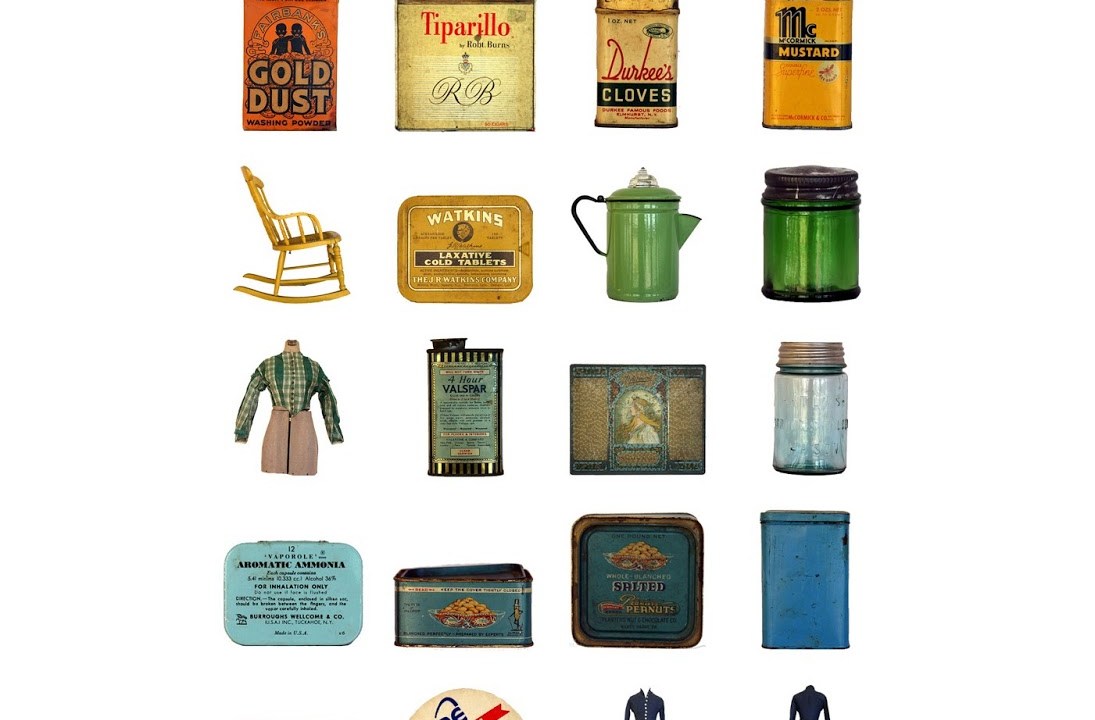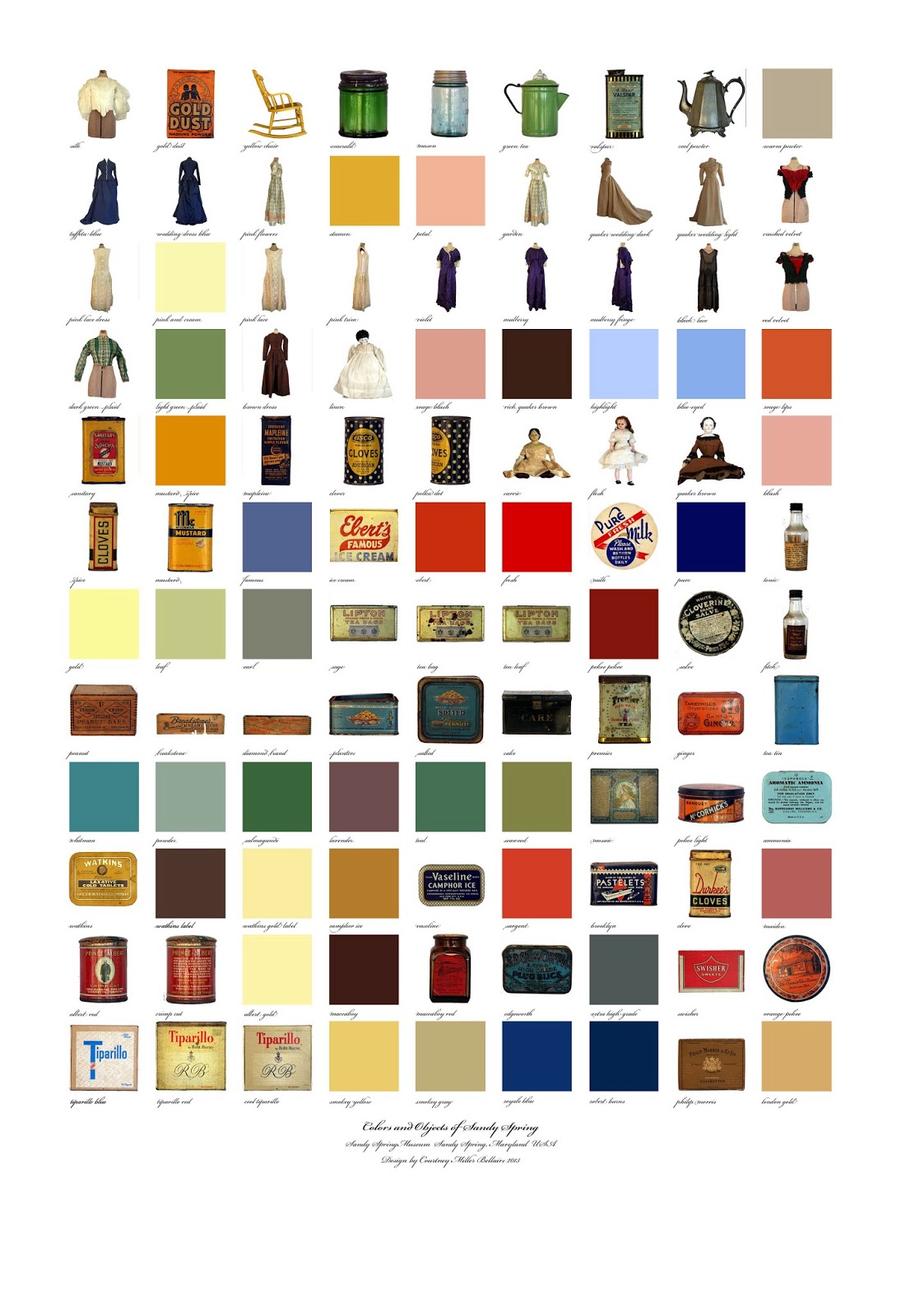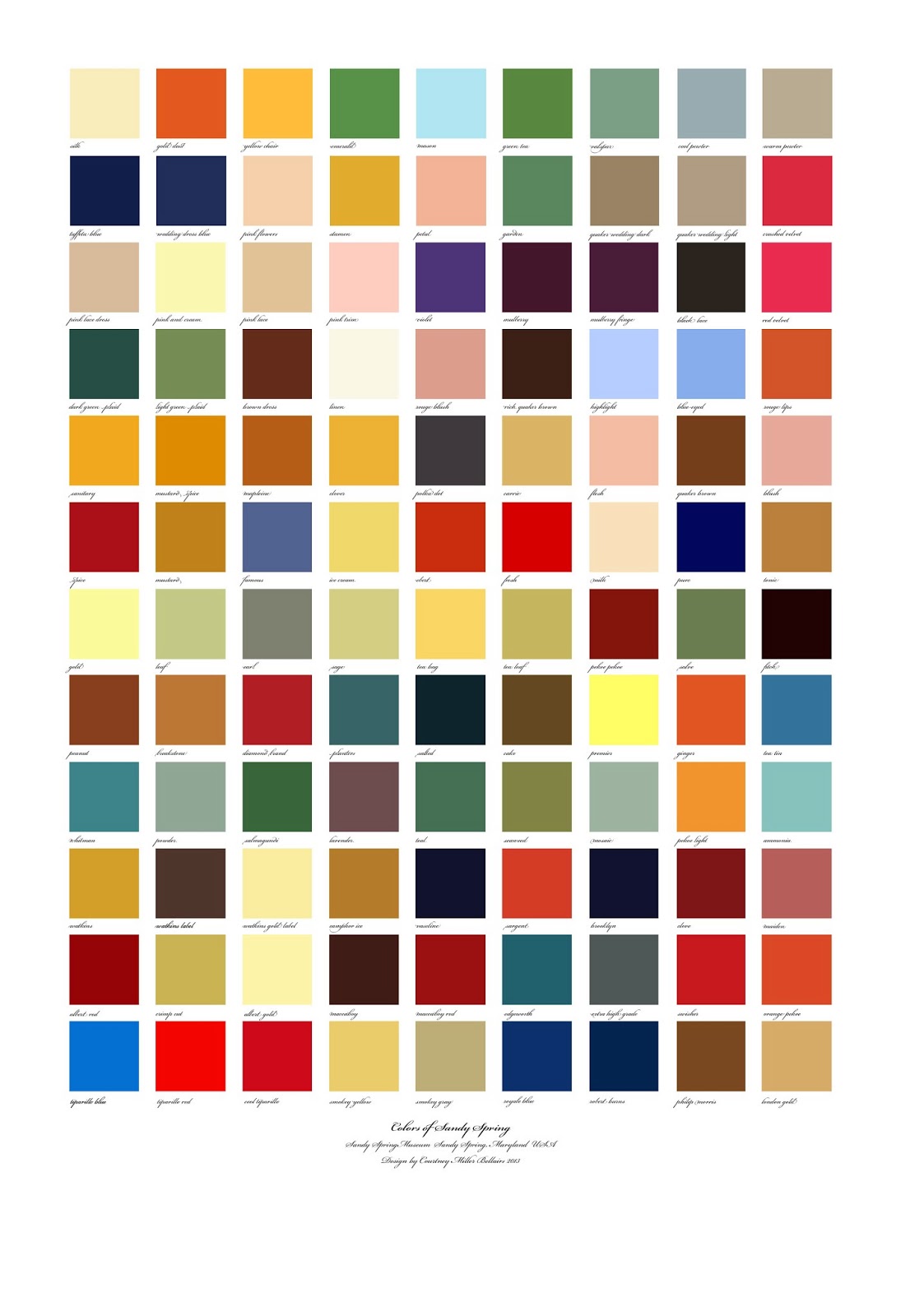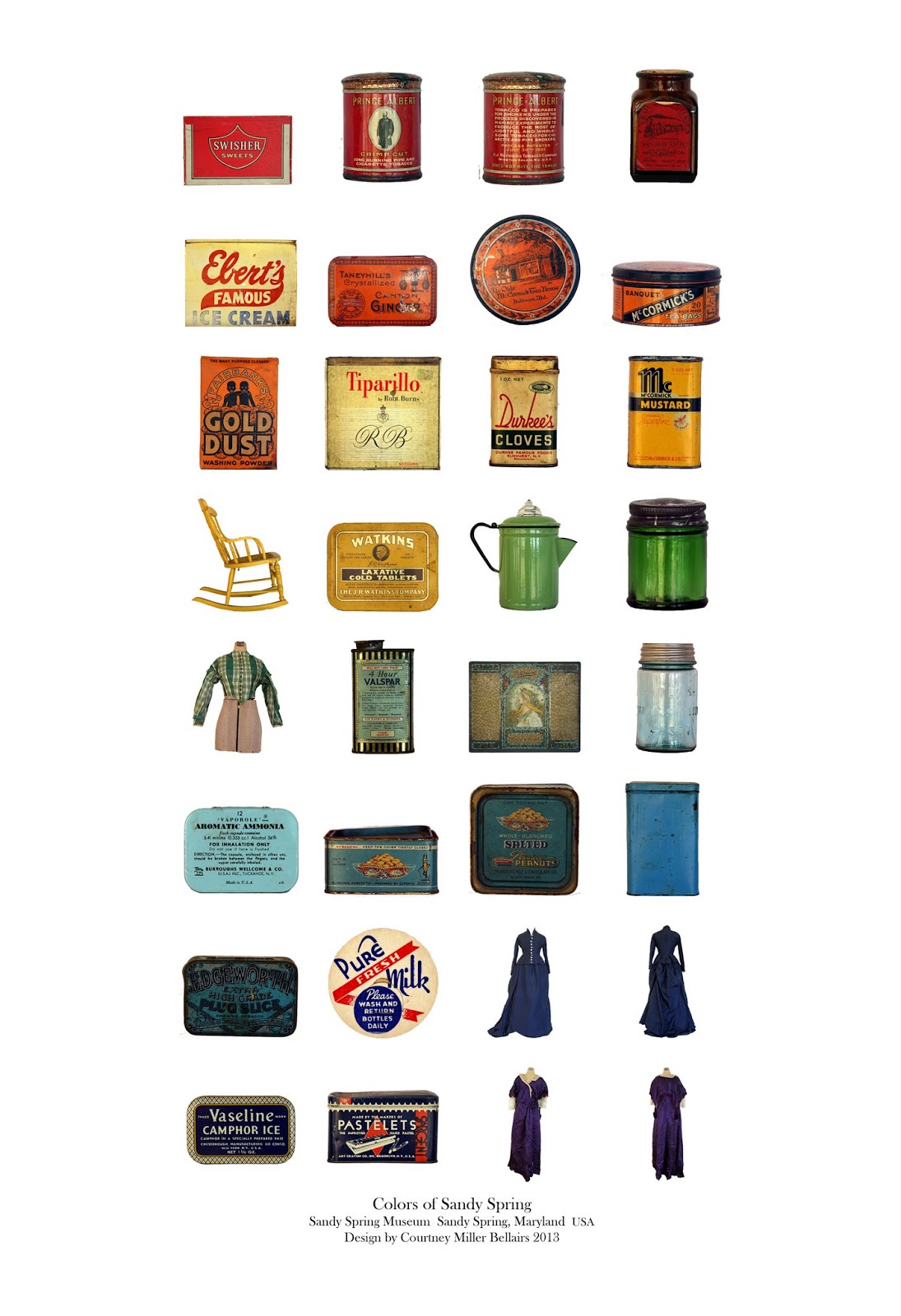
Many, many people are struggling with how to reinvent and reinvigorate the historic house. (Including the National Trust for Historic Preservation, whose “Re-imagining History House Museums” is one of the current projects in the CFM-partnered Innovation Lab for Museums.) Today’s guest post is by Allison Weiss, the executive director of the Sandy Spring Museum. I invited Allison to share how SSM is implementing ideas in line with her passion–finding ways to engage communities in the work of local history museums. The resulting approach—blending history with art, traditional with participatory design—results in new income streams and new audiences.
 We are also working with visual artists, bringing them into our collections storage facility and asking, “What inspires you?” The first artist was Rebecca Vaughan-Geib, a stone lithographer. A set of early 20th century yearbooks caught her eye and she created a series of prints using individual faces from the yearbook photos. The prints were displayed alongside the yearbooks, which had never been on exhibit. Descendants of many of the children depicted in the photos still live in Sandy Spring and were amazed to see these images used in such a contemporary way.
We are also working with visual artists, bringing them into our collections storage facility and asking, “What inspires you?” The first artist was Rebecca Vaughan-Geib, a stone lithographer. A set of early 20th century yearbooks caught her eye and she created a series of prints using individual faces from the yearbook photos. The prints were displayed alongside the yearbooks, which had never been on exhibit. Descendants of many of the children depicted in the photos still live in Sandy Spring and were amazed to see these images used in such a contemporary way.
 The second artist to work with us, Courtney Miller Bellairs, combined her interests in photography, local history, and color to create a series of photo collages based on a color grid inspired by the “colors of Sandy Spring.” In addition to exhibiting her work in our traditional art gallery, we hung several pieces in the exhibit hall, so her modern collages are on view right next to some of the artifacts that she photographed.
The second artist to work with us, Courtney Miller Bellairs, combined her interests in photography, local history, and color to create a series of photo collages based on a color grid inspired by the “colors of Sandy Spring.” In addition to exhibiting her work in our traditional art gallery, we hung several pieces in the exhibit hall, so her modern collages are on view right next to some of the artifacts that she photographed.
Type “how to make history museums relevant” into Google and you will get 27,300,300 results. Clearly the Sandy Spring Museum is not the only museum struggling with this issue! But we’ve come up with an idea that I think is worth sharing: open up the collection to visual, literary and performing artists to use as a source of inspiration in the creation of new works of art.
So what does it mean in reality? First, let’s try to imagine a completely different kind of history museum.
Imagine a local history museum with frequently changing exhibits that are created through the collaboration of artists, historians, and community members, where artifacts from the historic collection are juxtaposed with objects that tell stories about contemporary life.
Imagine coming to a program where storytellers bring to life stories from the museum’s historic journal collection, and visitors are invited to share stories about their own personal journey to Sandy Spring.
Imagine walking into the museum and encountering an artist creating new works of art based on some aspect of the collection, like photographs, journals or maps – or all three.
These are some of the ideas that we are implementing at the Sandy Spring Museum. Without changing our mission—essentially to preserve and share stories about local history—we have re-envisioned how we can fulfill that mission. Our vision is to become a thriving, central gathering place where local residents and visitors connect to history through the range cultural arts – visual, literary, performing, and storytelling.
For example, this fall we are partnering with the Bethesda Writing Center to offer an historical fiction writing workshop, introducing participants to the idea of using archival materials from our collection in their work.
 We are also working with visual artists, bringing them into our collections storage facility and asking, “What inspires you?” The first artist was Rebecca Vaughan-Geib, a stone lithographer. A set of early 20th century yearbooks caught her eye and she created a series of prints using individual faces from the yearbook photos. The prints were displayed alongside the yearbooks, which had never been on exhibit. Descendants of many of the children depicted in the photos still live in Sandy Spring and were amazed to see these images used in such a contemporary way.
We are also working with visual artists, bringing them into our collections storage facility and asking, “What inspires you?” The first artist was Rebecca Vaughan-Geib, a stone lithographer. A set of early 20th century yearbooks caught her eye and she created a series of prints using individual faces from the yearbook photos. The prints were displayed alongside the yearbooks, which had never been on exhibit. Descendants of many of the children depicted in the photos still live in Sandy Spring and were amazed to see these images used in such a contemporary way. The second artist to work with us, Courtney Miller Bellairs, combined her interests in photography, local history, and color to create a series of photo collages based on a color grid inspired by the “colors of Sandy Spring.” In addition to exhibiting her work in our traditional art gallery, we hung several pieces in the exhibit hall, so her modern collages are on view right next to some of the artifacts that she photographed.
The second artist to work with us, Courtney Miller Bellairs, combined her interests in photography, local history, and color to create a series of photo collages based on a color grid inspired by the “colors of Sandy Spring.” In addition to exhibiting her work in our traditional art gallery, we hung several pieces in the exhibit hall, so her modern collages are on view right next to some of the artifacts that she photographed. We have also converted unused space in the museum into artist studios and rented them to artists who use the collection in some aspect of their work. Enamellist Sue Garten is incorporating images of historic letters and photos in new works. Eileen Crowe is painting a pair of boots that were on display in a general store exhibit that is next door to her studio. Visitors to the museum can watch the artists at work and see the collection through the perspective of an artist. At the end of the summer, a potters’ cooperative is scheduled to move into an unused barn. Their presence will give us a chance to educate visitors on the potters mill that operated in the community during the early 1800s.
The next idea we are implementing is “Extreme Exhibit Makeover.” Our permanent exhibit has not changed in fifteen years, but we doubt that another traditionally constructed exhibit would reflect our new vision. Instead, our approach will be to identify teams of artists, historians, curators, exhibit designers, and members of the general public and sponsor friendly competitions to create new exhibits in our gallery. We are negotiating with the local cable TV station to see if they will film parts of the project as a kind of museum reality TV show!
We will also reach out to folk and traditional artists through fieldwork so the museum can more accurately reflect the history of the entire community, not just the dominant culture. Once we have completed the fieldwork, we will create a plan for bringing the folk artists into the museum. We are open to many possible ways to do this– residencies, performances, informal classes, or maybe just serving as a place for folk artists to gather and share traditions.
The financial impact? Currently our studio rentals are estimated to bring in $18,000 per year–almost 5% of our $385k operating expenses. Artists also help expand our audience by bringing in their own followers. We are essentially co-marketing the museum with our new partners.
In this world where is easier to connect in the virtual than the physical world, we are creating community by providing a place for face-to-face communion. This seems like a worthy role for a local history museum.
Images courtesy of Courtney Miller Bellairs, Copyright 2013
Images courtesy of Courtney Miller Bellairs, Copyright 2013










This sounds really exciting. At the Brooklyn Museum, our Decorative Arts department is breathing life into our period houses/rooms with a series of "activations" by contemporary artists who add their work to the historical objects/environments on view.
The one currently up is Valerie Hegarty's Alternative Histories, and an earlier iteration, Playing House, is documented at our website.
Wow – inspiring!
I wonder if there's been exploration in bringing artists in at the institutional planning level – say as committee or board members? That always seems to me like a good potential solution to "keep the momentum going" after individual projects end.
I would love to hear more on these projects and connect with others that are rethinking the historic house concept in congruence with artists.
I gave a shout out to the post on my blog on revitalizing historic sites through contemporary art (http://revitalizinghistoricsites.blogspot.com/2013/06/cfm-blog-post-love-what-if-historic.html) and on the Facebook page on the same topic (https://www.facebook.com/RevitalizingHistoricSites).
Keep up the awesomeness!
Thanks for your feedback! I completely agree with the need to keep artists engaged beyond the scope of their personal project.
Because we are a small institution with a local focus, we usually make very strong relationships with the artists who become part of our "family."
– Allison